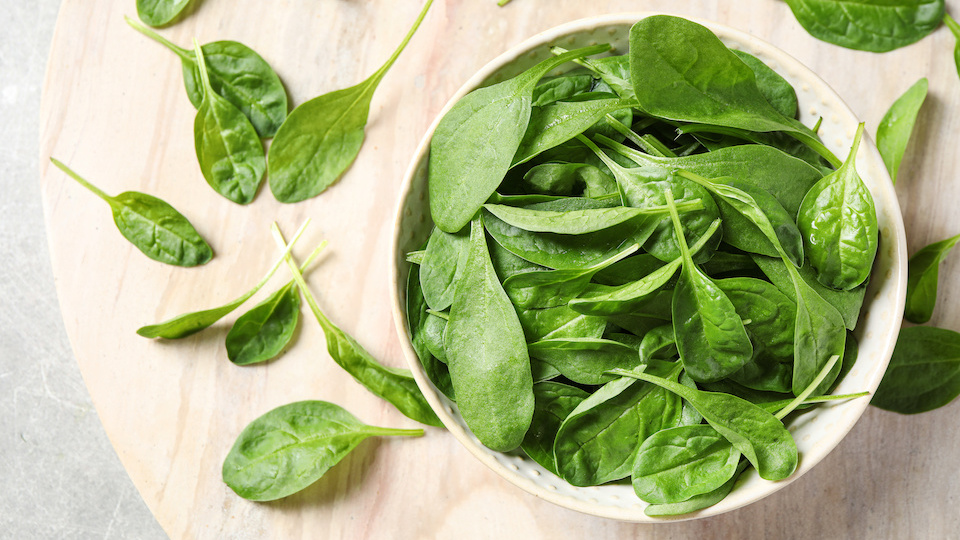While all fresh produce has great value, especially when you grow it yourself, spinach is a crop that you don’t want to forget about. Not only is it easy to grow from seed, but it is loaded with nutrients and highly versatile in cooking. In fact, if you were to plant only one seed during the present crisis, spinach would be the winner!
If you have a vegetable garden, you likely grow lettuce, tomatoes, and other yummy veggies such as carrots, peppers, and cucumbers. But if you aren’t growing your own spinach, you are seriously missing out. This highly nutritious leafy green is loaded with beneficial vitamins and minerals; however, buying it from the store is just asking for trouble. Here is the top reason you should grow your own spinach and helpful tips for a bountiful harvest.
Why grow your own spinach
In a shocking study, researchers examining non-organic produce for pesticide levels found a concerning increase in the pesticide traces of spinach compared to previous tests of this vegetable. In fact, the study results showed that spinach had more pesticides than any of the other vegetables that researchers compared. If you’ve heard of the ‘Dirty Dozen’ (the list put out by the Environmental Working Group that highlights the most pesticide-laden fruits and veggies), then you likely already know that spinach has a prime spot in this top twelve list. However, in just one year, spinach jumped to second place, right behind strawberries as the “dirtiest” food you can buy.
Buying organic is a great way to avoid these harmful, toxic chemicals present in spinach (and the rest of the dirty dozen). Still, the price can prove unsustainable. Especially if you like adding spinach to your morning smoothie. The best thing you can do is grow your own spinach in your backyard. That way, you know what it is exposed to from seed to harvest. Here’s how you can do just that.
How to grow spinach
This cool-weather crop is one of the easiest-to-grow, tastiest veggies you can add to your garden. It is loaded with iron, folic acid, vitamin K, and calcium, to name just a few of its most beneficial nutrients. Remember, spring and fall will be your primary growing seasons with spinach as the hot summer temperatures can cause the plant to bolt and become bitter.
Planting
Plant from seed directly in the garden as soon as the soil can be worked in the spring or around six weeks before the last expected frost date. Using succession planting (planting new seeds every ten days until late spring) will ensure that you have a continual harvest and will give you more leafy greens to enjoy. Sow seeds thickly to help allow more plants to grow.
If you struggle with rabbits eating all of your tender baby spinach leaves, simply plant in raised containers with wire around them rather than planting directly into the ground. Even better if these containers can fit on your porch or patio, which makes it even easier to harvest a bowl of spinach for your lunch.
Growing
Thin seedlings to four or six inches apart once they have at least two leaves and keep the soil moist to help protect from heat and encourage hearty growth. Some spinach varieties are susceptible to insect infestation and fungus or mold, so planting resistant cultivars will give you a higher chance of success. Since spinach is a heavy feeder and often saps the ground of any nutrients, be sure that you are fertilizing regularly and mix in organic compost as needed.
Cold frame
If you live in a more moderate climate, you can assemble a DIY cold frame and use it to extend your spinach growing season into winter. While a hard ground freeze will halt spinach growth, simply cover your not-yet-matured plants with straw or hay and leave them until the spring when the weather gets a little warmer. They should continue growing right where they left off and will allow you to get a harvest earlier in the season.
Harvesting
Six to eight weeks after planting, when each spinach plant has at least six four-inch long leaves, you can begin harvesting. Use scissors to cut away the outer leaves, letting the new growth mature and extending the harvest season. Once you notice signs of bolting or the weather is warming, cut down the whole plant at the base with shears or scissors. Wash thoroughly before using to ensure that all dirt, bugs, and other debris come off of the leaves.
Eat your safe, pesticide-free spinach right away in a salad, soup, quiche, or smoothie or simply freeze it in gallon bags to use later in your favorite dishes. This versatile veggie is delicious cooked or raw and will be a welcome addition to your meals.
-Taylor Ramsey



